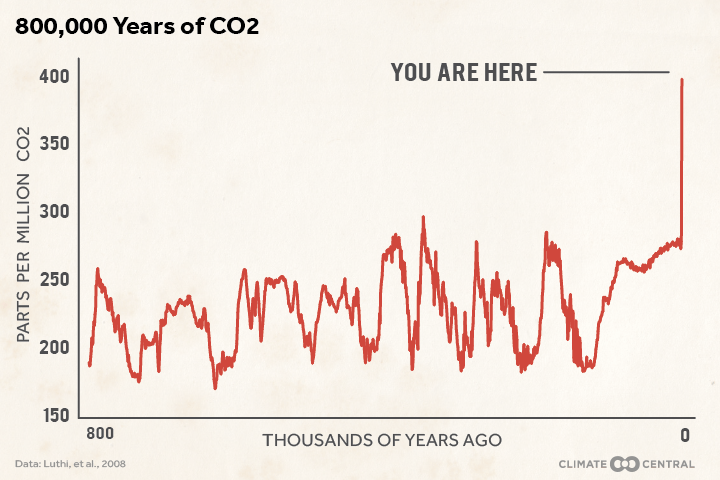Climate Central reported in November: This week is a big one for our world. Atmospheric carbon dioxide (CO2) levels climbed above the 400 parts per million (ppm) at the Mauna Loa Observatory and it’s distinctly possible they won’t be back below that level again in our lifetimes.
Humans have burned enough fossil fuels to drive atmospheric CO2 to levels that world hasn’t seen in at least 400,000 years. That’s driven up temperatures, melted ice and caused oceans to acidify. Some extreme weather events around the world have become more likely and stronger because of it, and some will likely only get worse as the planet continues to warm.
Because CO2 sits in the atmosphere long after it’s burned, that means we’ve likely lived our last week in a sub-400 ppm world. It also means that the reshaping of our planet will continue for decades and centuries to come, even if climate talks in Paris in two weeks are successful. [Continue reading…]
War in Context
… with attention to the unseen



If, somehow, the earth’s people keep churning out GHGs and ALSO the concentration of CO2-equivalents stays at about 400 ppm, that means that the annual excess CO2 is being absorbed by the oceans. (And if humankind stopped emitting CO2, the presently-existing CO2 would continue at least for a while to be absorbed by the oceans.)
That means that, as things stand, CO2 will keep benig absorbed by oceans and the water of the earth’s oceans will continue to acidify. That will mean die-offs of coral reefs and changes in life patterns throughout the oceans.
It’s no joke, either way, but a “cold turkey” stop (OK, OK, “cold turkey” in 20 years) to CO2 emissions would be a far, far better thing for the oceans — and thus for all life on earth — than continued emissions-as-usual (which is what I, ever a pessimist as to reasonable human behavior, expect).